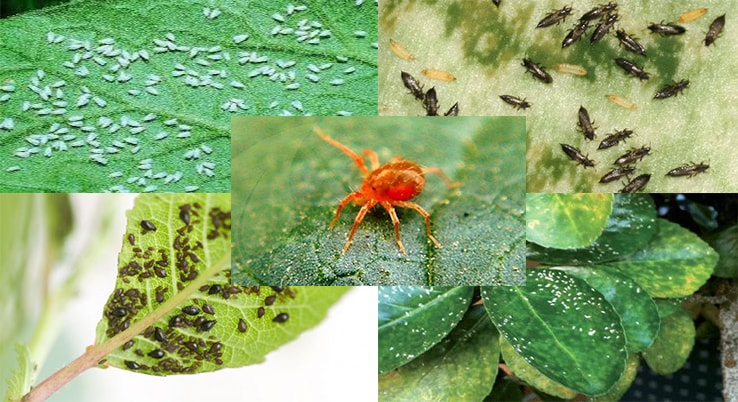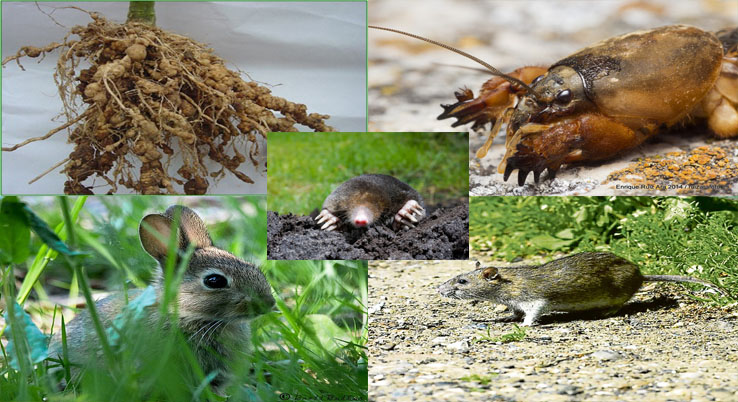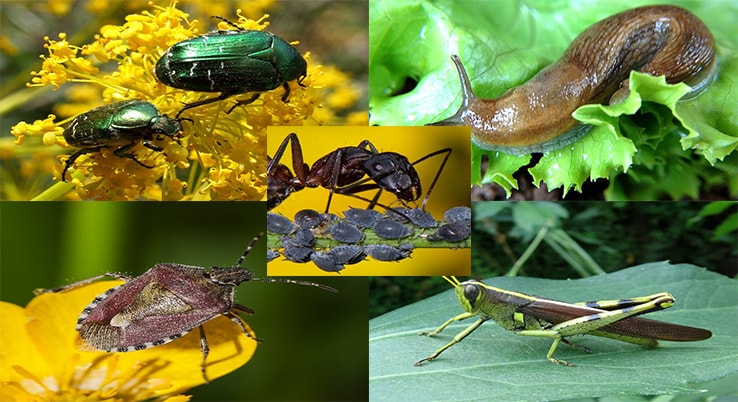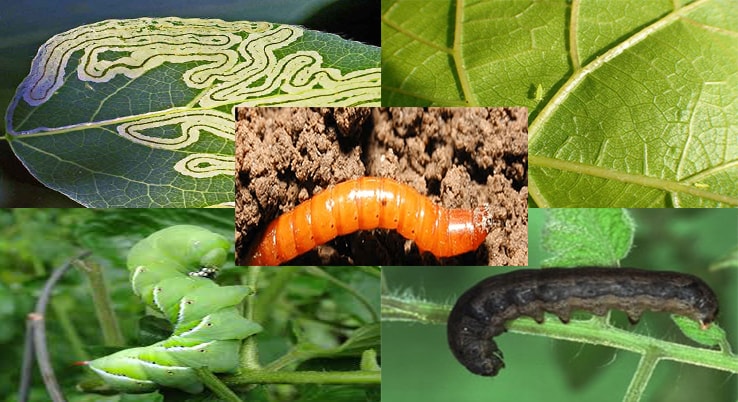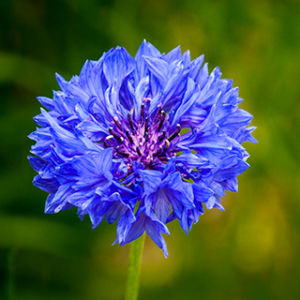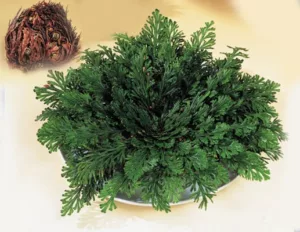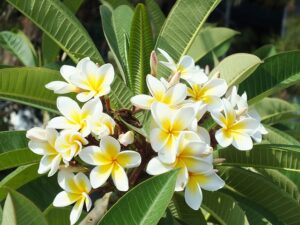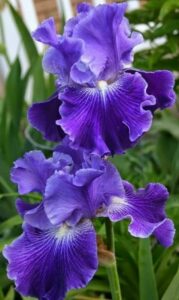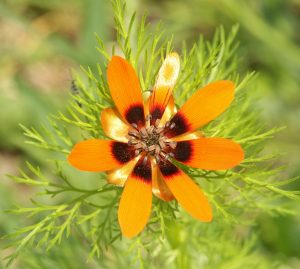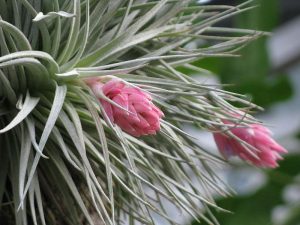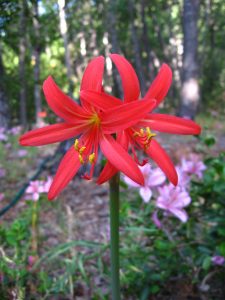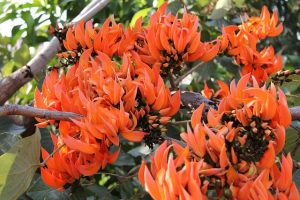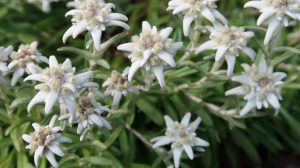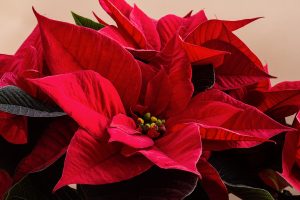Types of pests: Cochineals, aphids, whitefly, trips and red spider
One of the main problems that we always have with our plants in the garden is the appearance of pests that infest them and sometimes they cause us until the death of our plant. Today we will learn about the types of pests and how to exterminate them naturally.
Types of Pests

Today we will begin to delve into the first 5, in future articles we will continue with the rest.
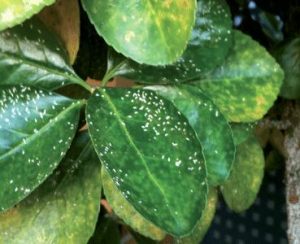
1. Cochineals
All Cochineals or Cocidoillas are characterized by having a kind of protective shield of varied colors and consistencies. They nail their beaks in the leaves and suck the sap, causing discolored, yellowish leaves and their subsequent fall. Part of the sap they drink is excreted as a bright sugary liquid (molasses) on which the Negrilla mushroom sits.
How to detect Cochineal in our plants?
Seeing the insect itself.
On discolored, yellow, deformed leaves
Seeing the bright and sticky leaves for the molasses (careful because Aphids and Whitefly also produce it).
For the presence of the fungus Negrilla or Fumagina (this mushroom also sits on the molasses Aphids and Whitefly).
Cochineal affects our plants producing 2 types of damage:
* Direct damage by absorbing sap. The plant loses vigor and weakens, because the cochineal when sucking the juices by means of a beak that nail in leaves, branches or fruits.
* Indirect damage to the fungus Negrilla that sits on the molasses they excrete. This also weakens the plant because it blackens the leaves, preventing photosynthesis. The aesthetic deterioration is important.
How to fight them?
These insects are difficult to fight because they have shells that protect them from insecticides. In indoor plants you can pass over cotton or a brush dipped in methyl alcohol. To eliminate them, do not despair; With the right treatments it is controlled, although it is hard.
An ecological solution to eliminate them is to apply a soap and alcohol solution with a sponge. How is it done?
Dissolve a tablespoon of soap or a jet of dishwasher in a little water not too hot. Add a liter of water and a tablespoon of alcohol to burn. With a brush, spread the insects or spray the whole plant without forgetting the underside of the leaves. The plants with delicate leaves will be rinsed with lukewarm water after 15 minutes, so they do not burn.
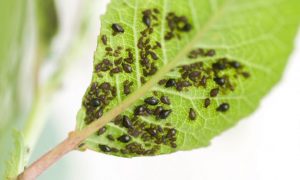
2. Aphids
Aphids dig in their sucking beak and absorb sap. Deformed leaves and buds, which roll or curl. It also appears the black fungus Negrilla (Fumaginas spp.), And ants that take care of the aphids. There are different colors: green, yellow, brown and black.
How to detect it?
- When seeing the insect itself (they measure about 3 millimeters).
- By the rolled sheets, sticky and the shoots attacked. They like tender buds more and that’s where they settle preferentially.
- For yellow spots or pale green at the stinging points.
- It also appears the fungus Negrilla (Fumaginas sp.), Black and ants (these collect the drops of molasses that excrete the aphids and are close to them to clean and protect them).
The aphids cause several damages to the plants, since they absorb the sap of the leaves. In addition, the Negrilla that appears on the molasses disfigures the plant and also harms by preventing photosynthesis. Another important thing is that Aphids are the main transmitters of viruses. They sting in an infected plant and when they chop in another healthy one, they inject the virus to him.
How to eliminate Aphids?
- It eliminates the weeds and the rest of cultivation of the garden, so that they do not take refuge there.
- If the attack is weak, cut the damaged leaves and buds. Eliminate what you can with a toothbrush (especially in indoor plants) and give a shower with soapy water or with warm water under pressure. If not, apply insecticide or a homemade preparation such as the one obtained from leaving a bottle with water and cigarette butts macerating overnight; the next day you filter the water and spray with the liquid.
- You can also try a very simple mixture: dissolve in a liter of water 2 tablespoons of neutral soap flakes and 2 of 90º alcohol. Add 3 or 4 butts of macerated cigars in half a glass of water, well filtered so that the nozzles of the sprayers do not get clogged.
- Another remedy is an infusion based on nettles. Put in a bucket 500 grams of fresh nettles and 5 liters of water; cover the container with a plastic or a table that fits well and removes often. When the mixture is broken, put it in a bucket. Let it sit for 12-24 hours and sprinkle on insects.
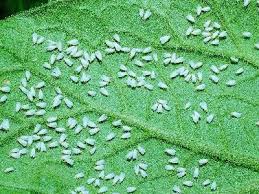
3. White fly
They are small white flies that settle mainly on the underside of the leaves. If they shake, they fly off. They mainly affect Begonia, Fuchsia, Dahlia, Geranium, Poinsettia, Rosal, Laurel, Gardenia, Coleus, Cineraria, Spring, Salvia and Gerbera. They produce damage when chopping the leaves.
The first symptoms that the infected plants have are the yellowing of the leaves, they discolor and later, they dry up and fall off.
In addition, the leaves are coated with a sticky, shiny substance that is the molasses excreted by the insects themselves. Also on this molasses sits the fungus called Negrilla as happens with Cochineals and Aphids.
To eliminate this plague there are several ecological remedies, here I show you some of them.
- Treatment with an infusion of Tanaceto or, if very serious, with rotenone or pyrethrin (products used in organic agriculture alternative to chemical synthesis), such as the one shown in the image.
- You can spray the plant with soft soap. Wash the plant with soapy water to help control the proliferation. It is a good remedy.
- Plant next to the most sensitive species, some aromatic, Chinese carnations, marigolds or ornamental tobacco; these plants have a certain repellent effect on Whitefly.
Ecological insecticide
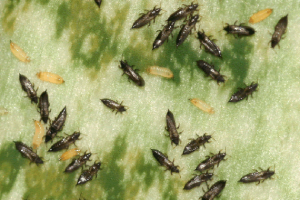
4. Trips
These insects measure a few millimeters. They sting the leaves, causing a silvery color or discolorations that then dry and fall. They attack the flowers a lot.
How to detect these insects in our plants?
Both larvae and adults dig a beak and feed on the sap on the underside of the leaves, leaving whitish spots on the leaves, with a typical silvery-leaden appearance and surrounded by black specks of their droppings. They also sting in flowers and fruits. The flowers can be attacked and, sometimes, they do not get to open completely or take a frizzy look. Another one of the damages that it causes is the deformation of leaves, flowers and fruits, dotted discolorado and premature fall of leaves, petals and fruits.
To control this pest you must keep the plants grown in pots in a cooler and more humid place. Good watering and humidity, because the Trips favor dryness and heat. In addition to resorting to chemical insecticides, they can be combed with Pyrethrins, which is a natural product used in Ecological Agriculture.
Pyrethrins
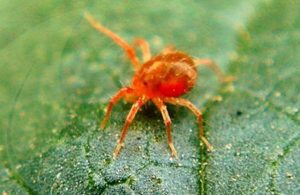
5. Red spider
They are spiders (mites) of red color that can hardly be seen with the naked eye. They settle mostly on the underside; If you look closely or with a magnifying glass, they look. The red spider causes a yellowish appearance and yellow or brown spots; Then they are curled, dried and fall. Sometimes fine cobwebs are seen. They appear in a dry and hot environment (typical summer plague).
This pest can cause important damages, especially in dry and hot weather, when the spider generations follow one another quickly. The warm and dry atmosphere of the floors favors its attack. In a humid environment it does not develop, so it is very good to spray with water alone. Because of this, it is a typical summer plague, favored by the heat and dryness of the environment. In fact, in a crop with sprinkler irrigation there is no red spider.
These spiders weaken plants by damaging leaves and if the attack is strong can cause the fall (defoliation). It also affects the aesthetic by discoloration of the leaves and defoliation.
How to eliminate the red spider from our plants?
- Dry nettles in infusion is a good biological method to control the red spider. The only condition to take into account when applying the broth is to spray the plants before the formation of leaves and branches in deciduous trees and shrubs.
- Infusion of ferns diluted in water to apply in early spring.
- Absinthe infusions mixed with soda silicate, spraying the species in spring and autumn.
- Horsetail with neutral soap, which should be applied for 3 days in a row on sunny mornings.
- Onion skins spread across the soil of the crops makes repellent.So far today’s article on the first five types of pests. I hope it has been helpful, because it is vitally important that we take care of our plants, so their flowers will continue to please our hearts. ?Remember to like and share on your social networks if you liked this article. Leave us your comments here.
![]()
Information source: www.infojardin.com
Share this content:
